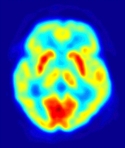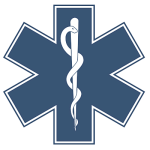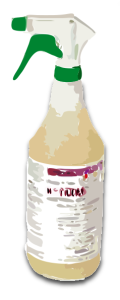What’s Amiss with our Children:
by Guest Blogger, Alice Shabecoff
As we watched each of our five grandchildren and their friends enter this world and begin their life’s journey, it became more and more clear that something is amiss with this generation. How are your children and your friends’ children doing?
Most likely, one of three of the children you know in this generation suffers from a chronic illness. Perhaps it’s cancer, or birth defects, perhaps asthma, or a problem that affects the child’s mind and behavior, such as Downs Syndrome, learning disorders, ADHD or autism. Though one in three may sound exaggerated, unbelievable, the figures are there amidst various government files.
This generation is different. Childhood cancer, once a medical rarity, has grown 67 percent since 1950. Asthma has increased 140 percent in the last twenty years and autism rates without a doubt have increased at least 200 percent. Miscarriages and premature births are also on the rise, while the ratio of male babies dwindles and girls face endometriosis even in teenage.
This generation is the first to be raised in a truly toxified world. Even before conception and on into adulthood, the assault is everywhere: heavy metals and carcinogenic particles in air pollution; industrial solvents, household detergents, prozac and radioactive wastes in drinking water; pesticides in flea collars; artificial growth hormones in beef, arsenic in chicken; synthetic hormones in bottles, teething rings and medical devices; formaldehyde in cribs and nail polish, and even rocket fuel in lettuce. Pacifiers are now manufactured with nanoparticles from silver, to be sold as ‘antibacterial.’ What’s wrong with rinsing a pacifier in soapy water?
Despite naysayers (who pays them to say nay?—that’s a whole story in itself), it’s clear there is both an association and a causative connection between the vast explosion of poisons in our everyday lives and our children’s “issues.” Over 80,000 industrial chemicals (tested only by the manufacturer) are in commerce in this country, produced or imported at 15 trillion pounds a year. Pesticide use has leapt from the troubling 400 million pounds Rachel Carson wrote about in the 1960s to the mind-boggling 4.4 billion pounds in use today. Nuclear power plants, aging and under-maintained, increasingly leak wastes, often without notifying their community.
What could be more elemental than our desire to protect our children. Children and fetuses, because of their undeveloped defense systems, are ten to sixty-five times more susceptible to specific toxics than adults. These toxics diminish the capacities of our children…the future of our families, our communities, our nation.
Illness does not necessarily show up in childhood. Environmental exposures, from conception to early life, can set a person´s cellular code for life and can cause disease at any time, through old age. This accounts for the rise in Parkinson´s and Alzheimer´s diseases, prostate and breast cancer.
Yet this is not the dispiriting ‘Bad News’ it might seem. It is, actually, a message of hope and optimism. We are fearful only when we are ignorant and powerless. Now that we know what is happening, we can determine not to let it happen further.
These poisons are manmade; manufacturers can take them out of our children´s lives and make profits from safe products. ‘Green chemistry’ can replace toxic molecules with harmless ones. We can connect global climate change actions to environmental health strategies. If we replace coal-fired power, in the process we reduce not only carbon but also emissions of the tons of lead, mercury, hydrochloric acid, chromium, arsenic, sulfur and nitrogen oxides that cause autism, Alzheimer’s and other public health menaces.
In a riff on Pogo, let’s say, “We have met the heroes and it is us.” We cannot bury our heads and hope it will all go away. We cannot leave the job to someone else. Some may feel the problem is so massive, it’s best to pretend it doesn’t exist. But it isn’t more massive than we allow it to be. It’s totally within our reach.
We are mothers and grandmothers. There are 23 million children adversely affected by our toxic lives. That makes (more or less) 23 million mothers, 46 million grandmothers. We are a powerhouse. It is in our power to learn about what harms our children and to share our knowledge. It is in our power as a community of citizens and parents to demand action against the current harmful policies and practices and against the indiscriminate use of processes and practices that destroy and degrade all life on our planet.
—
Alice Shabecoff is the co-author with her husband Philip of Poisoned Profits: The Toxic Assault on our Children, Random House. She’ll be participating in a call-in podcast episode of Living in a Chemical Soup next month. You will be able to ask questions and talk with Alice.
See her website, www.poisonedprofits.com.





